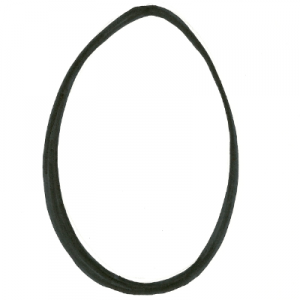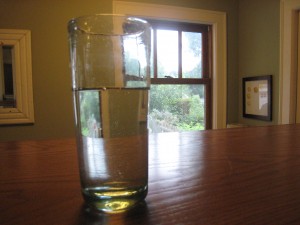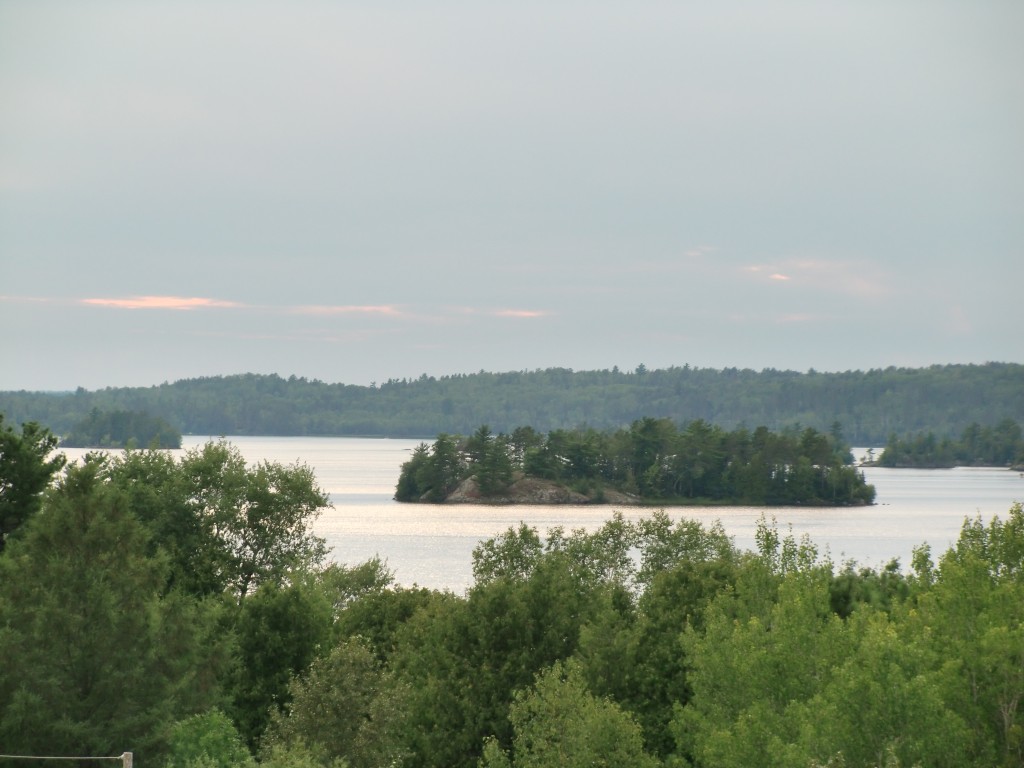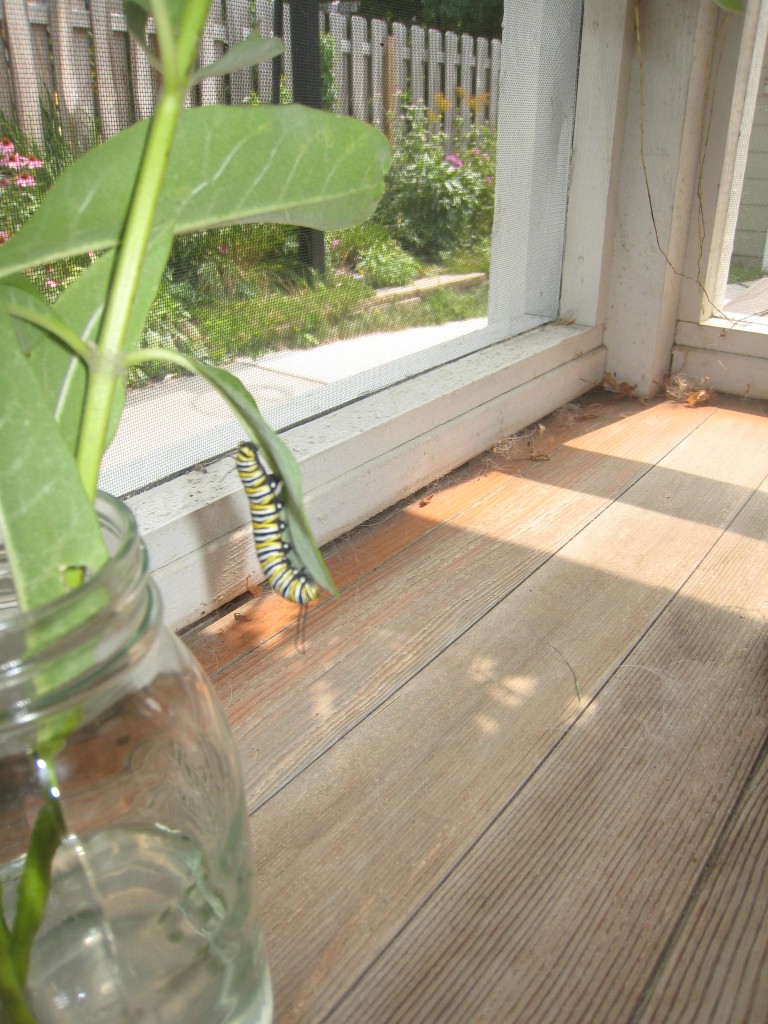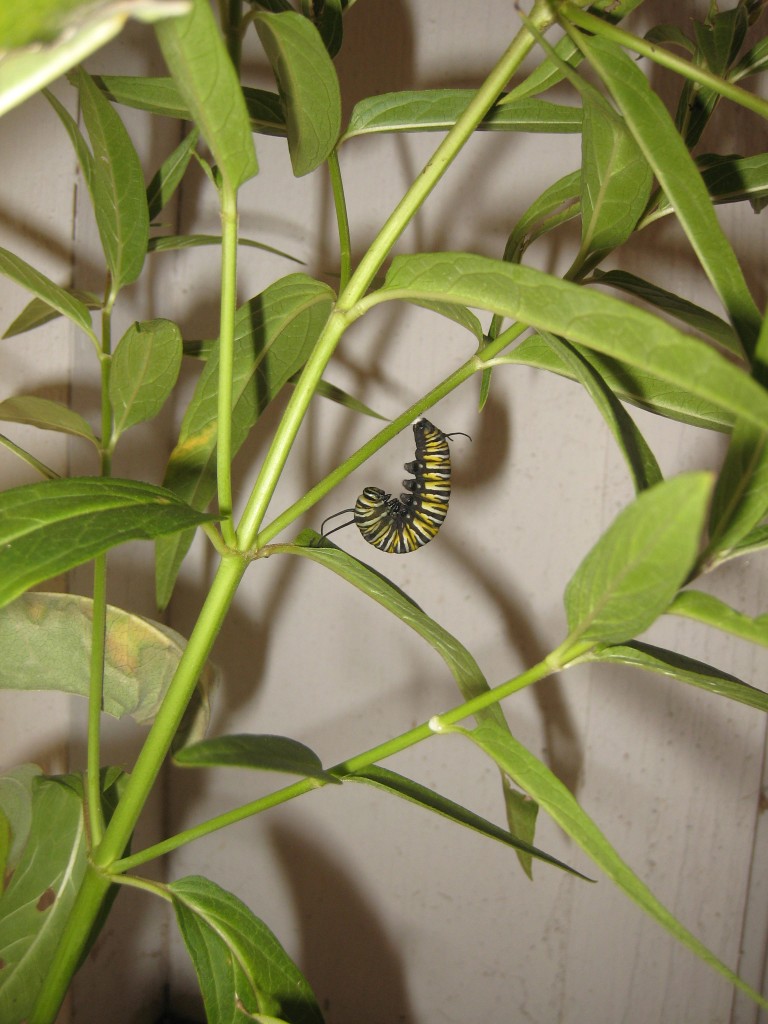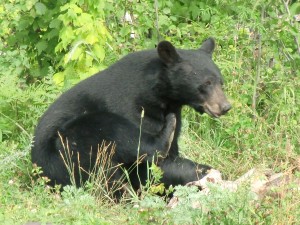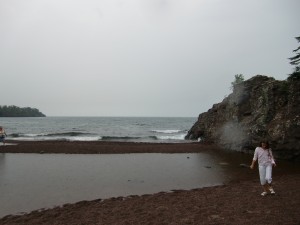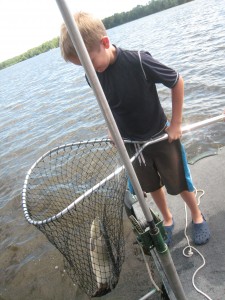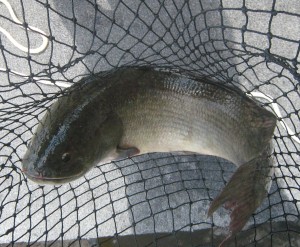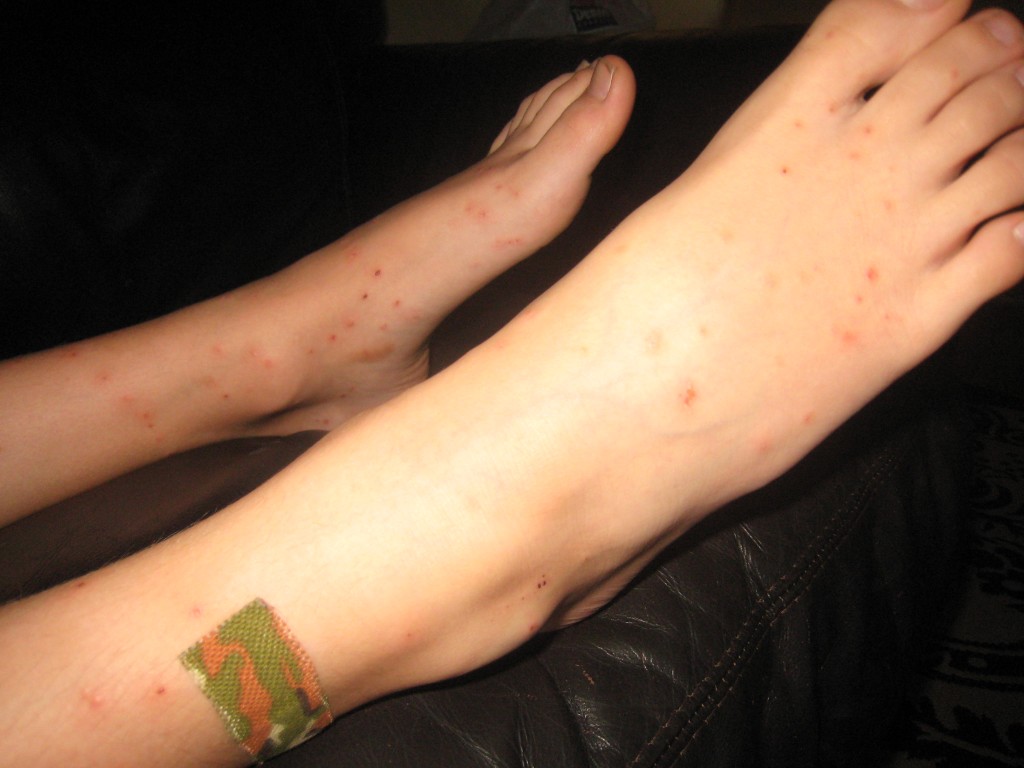Category:The World Around Us’
What is Salmonella?
- by KitchenPantryScientist
More than half a billion eggs were recalled after Salmonella sickened over 1600 people (according to the Center for Disease Control, or CDC in September.) That’s a lot of eggs, and a lot of sick people.
What is this nasty bacteria that makes us wonder whether we should let our kids eat raw chocolate chip cookie dough, even as we sneak several spoonfuls when they’re not looking?
Salmonella enterocolitis is one of the most common types of food poisoning and is caused by the bacteria Salmonella Enteriditis. You can get a Salmonella infection by swallowing food or water that is contaminated with the salmonella bacteria. Often, the culprit is surface contamination from raw chicken and raw or undercooked eggs. In most people, it causes diarrhea, fever and abdominal cramping, but young children and those with weakened immune systems are at greater risk of dehydration and more serious infections.
Why don’t they just wash the eggs better? Salmonella bacteria live in the intestinal tracts of animals and birds and can infect the ovaries of healthy-looking chickens. This allows bacteria to infect the eggs even before the shell is formed and voila- you have a pathogen that can’t be washed off of the egg because it’s inside. Salmonella bacteria are often found in the “white” of an egg, although they can migrate to the yolk as the raw egg sits in your refrigerator. Organic and free range chickens have less disease than factory-“farm” raised chickens, partly because of healthier diets and less crowding. Cooking eggs until the yolk is solid kills Salmonella bacteria.
How can you make your cookie dough and eat it too? Buy pasteurized eggs (you can find them at most grocery stores) that have been heat-treated to kill bacteria, but are still essentially raw for all cooking and baking purposes.
Also, remember to wash cutting boards you’ve cut meat on with soap and water before cutting anything else on them, or just have separate cutting boards for meat. Don’t forget to wash your hands after handling raw eggs! Pet food and reptiles can also harbor salmonella bacteria, so have your kids wash their hand after handling either!
Bacteria are everywhere. Some keep you healthy and some make you sick, but making good decisions in the kitchen can keep you and your family from being affected by food-born illness!
What We Take for Granted
- by KitchenPantryScientist
The facts speak for themselves:
- Every 20 seconds, a child in a developing country dies of a water-related illness (World Health Organization)
- Waterborne diseases remain the leading cause of illness and death in the developing world. (World Health Organization)
- 46 percent of people on Earth do not have water piped to their homes (National Geographic)
- Women in developing countries walk an average of 3.7 miles to get water (National Geographic)
Shocking, isn’t it? It should at least give you pause as you fill up your child’s glass with clean tap water, or maybe even filtered tap water. Now, try to imaging walking 3.7 miles in the dark or the hot sun to bring home water that may or may not make your child sick, or even kill them. What choice would you have though? Water is life.
I recently signed up to participate in the Clean Water Blogivation campaign. If my blog receives the most votes, I could win an opportunity to be a change agent and join Dr. Greg Allgood on a clean water expedition to Africa and a $15,000 donation to my favorite charity tackling water issues. Much more importantly, each time someone votes for my blog post, P&G will donate a day’s worth of clean drinking water (2L) to a person in need in a developing country. Click on the “vote for this blogger” button above and clean drinking water for a day will be donated each time you vote! (You can vote once a day.)
The task of fetching water defines life for many people on this planet. National Geographic tells the story of an Ethiopian woman named Aylito who dropped out of school when she was eight to help her mother carry water from a dirty river. She spends eight hours a day walking to and from the river, up and down a mountain, three times to carry 50 pounds of water on her back. It is a life almost beyond imagining for most of us who live in developed countries. However, one can imagine that people who work so hard to get so little water have very little water to spare for sanitation, like hand-washing, or washing clothes. According to National Geographic, proper hand washing alone can reduce diarrheal disease by 45%. Many people cannot afford soap though.
What diseases are carried by dirty water? You name it: bacterial diseases like E.coli and Vibrio Cholerea, parasites like Guinea Worm, viruses and protozoa. Some of these pathogens can be killed by boiling, but for many, firewood is scarce. Sometimes, it’s too much water from flooding that causes drinking water to be unsafe. (The floods in Pakistan are causing problems right now.)
There’s a fairly comprehensive list of water-born microbes on Wikipedia, and if you’d like to learn more, the World Health Organization and the Center for Disease Control are great resources.
The obvious question is, “what can I do to help?” Many aid organizations and churches have programs to help people get access to clean water and proper sanitation, whether it’s by helping dig wells or sending bars of soap. WaterAid is a U.K.-based international non-profit organization that is helping bring not only clean water, but sanitation and hygiene programs to many villages desperate for clean water. The organization makes local women an integral part of the process. Proctor and Gamble, who is running the Clean Water Blogivation campaign, make a PUR powder which can be mixed with contaminated water to make it safe to drink. They have a Children’s Safe Drinking Water program and have been working with a number of organizations to distribute the PUR powder around the world to those who don’t have access to clean water.
Who Will Speak for the Lakes?
- by KitchenPantryScientist
Having grown up in the Flint Hills and tall grass prairie of Kansas, I was in awe when when we moved to Minnesota, with its 10,000 (or 11,842) lakes dotting the landscape. The fact that I now have a lake within walking distance of my house boggles my mind. It’s like a dream to live in a state where you don’t have to be a millionaire to own, or spend the weekend, at a cabin by the water.
I don’t think Minnesotans realize how lucky they are. We take our lakes, and rivers and streams, for granted. Sadly, instead of being stewards of our precious waterways, many property owners build structures that harm our lakes, allowing chemicals and fertilizer to wash into the pristine water every time it rains, interfering with the natural wildlife and vegetation. Not only that, people refuse to replace old septic systems which often cause the lakes where our children swim to be contaminated with human waste. Somehow, we expect our lakes to remain clean and healthy, existing purely for our weekend fun.
Recently, we had a chance to make people take more responsibility for keeping our lakes healthy, so it was depressing to read in last week’s Star Tribune that our governor has once again refused to take measures to care for our local treasures. “It’s like a parting shot out to Minnesota — thumbing his nose at clean water after all these years, which is a dirty legacy to leave,” said Sen. Ellen Anderson, DFL-St. Paul and chair of the Senate environment, energy and natural resources budget committee. In fact, our governor is taking care of his own political aspirations and his friends with environmentally-unfriendly lakeside mansions, while pretending to represent the average Minnesotan.
In the book “The Lorax”, by Dr. Seuss, the Lorax speaks for the trees. Who will speak for our lakes, so that we can continue to enjoy them? Who will speak for the natural resources you enjoy with your family? It’s something to keep in mind come November.
For the next week or so, I’ve decided to blog about water. National Geographic did an amazing job of writing about water and our world in April, and I’m going to participate in P&G’s Give Health “Clean Water Bloggivation”, not to win the trip to Africa, but because they’ll donate clean drinking water to people who need it, in return for participation in the program. I’ll also blog about how you can make your own lake-front more environmentally friendly by planting a strip of native plants and grasses beside the water.
Caterpillars Everywhere!
- by KitchenPantryScientist
It’s August and Minnesota is crawling with Monarch caterpillars! They’re on the swamp milkweed and the ditch milkweed almost everywhere you look! We brought one home from the cabin with us last weekend and it’s happily munching milkweed and growing fat on our screened-in porch, soon to be dreaming in a chrysalis. If you get a chance, check out my post on finding and taking care of your own monarch caterpillar and go on a hunt for your own caterpillar!
Metamorphosis from caterpillar to butterfly is truly one of nature’s more spectacular exhibits and is absolutely free of charge!
Aug.8th…
Our caterpillar has attached itself to a leaf and is hanging upside down in a J. We’re watching for it to change into a chrysalis and will try to capture it on film, although it happens very fast!
Minnesota Wild
- by KitchenPantryScientist
After spending a weekend relaxing at my parents’ cabin, watching loons, eagles and osprey fishing in the lake, we headed north to Ely and got close up and personal with some much larger Minnesota predators at the North American Bear Center and the International Wolf Center. Our French visitors were especially excited to experience our wildlife, since bears and wolves have been completely eradicated from their own country. They informed us that there was only one bear and a few re-introduced wolves left in France. Fortunately for us, the United States’ depleted wolf and bear populations are coming back thanks to the efforts of organizations like the bear and wolf centers.
At the Bear Center, we watched black bears Ted, Honey and Lucky snack and play from a balcony just above their habitat. We learned that black bears are much less aggressive than grizzly bears and can usually be scared away from campsites by yelling, clapping, and throwing things at them. They are also very unlikely to attack people in defense of cubs, which is a grizzly bear trait. The bears were playful and the 2-year old cub Lucky was especially fun to watch! You can watch these amazing animals live via the “bear cam” on their website at www.bear.org.
Across town, which isn’t very big and is filled with enough canoes and Duluth packs for an army, you’ll find the International Wolf Center. This organization, whose mission is to advance the survival of wolf populations by teaching about wolves, their relationship to wildlands and the human role in their future, has put together an extensive collection of information about wolves in myth and reality (including lots of cool werewolf legend stuff for “Twilight” fans.) Best of all, the facility houses a pack of four wolves living in a viewable habitat behind the facility.
The pack changes over the years, as new wolves are introduced and the pack dynamics change. Two arctic subspecies of the gray wolf, Malik and Shadow, born in 2000, were recently put into “retirement” when they got older and the younger wolves got too aggressive with them. Currently, the pack consists of Grizzer and Maya-two great plains subspecies born May 5, 2004 and Aidan and Denali, two northwestern subspecies, born on April 27, 2008. The wolves weren’t too active when we were there, but at one point, two of them came close to be scratched by some wolf center workers and another took a nap right in front of the viewing window.
The wolves looked like leggy huskies close up and we learned that they have bigger feet (for chasing prey in the snow) and much stronger jaws than domesticated dogs. We also learned that their bodies are made to survive nearly two weeks without food, since they only bring down their prey thirty percent of the time. The wolves at the center are only fed once a week, but you can see them eat if you’re there on the right day. They eat everything except the stomach of their prey, since the stomach contains plants, which they can’t digest.
You can go to www.wolf.org to read more about wolves and watch their wolf pack live on webcams!
We finished the road trip by weaving our way through tall pines and past hidden lakes to the majestic shores of Lake Superior, where we took the scenic highway down the North Shore. Stopping to play on the rocks and hike down to the lake at Gooseberry Falls State Park was a highlight of the trip, even as rain started to fall. My husband looked like a kid again as he waded smiling into the frigid water of Lake Superior and stomped around in the waves. I felt thankful to live in Minnesota and for all the efforts people have made to preserve our wilderness and nurture our native species.
Seafood Watch
- by KitchenPantryScientist

Eat fish. It’s good for you .
We hear this message over and over, and it’s true. Fish is good for you.
Most people are also aware that eating to much fish can be bad for you too, if it’s the kind of fish that tend to build up heavy metals and pesticides. Farm-raised fish can be full of toxins, depending on how they’re raised. After all, you are what you eat, even if you’re a fish.
Sadly, our appetite for our finny ocean friends has brought many of our favorite fish to the brink of extinction. The majestic Bluefin tuna is almost certainly doomed and many other species are in trouble too. It may not seem like a big deal, but fragile ecosystems hang in the balance.
What can you do to help save our oceans? Visit the Monterey Bay Aquarium’s Seafood Watch website and print off a Seafood Watch Pocket Guide to help you select seafood that is both safe to eat and abundant enough to be well-managed and caught in environmentally-friendly ways. They even have a sushi guide.
If you want to shop at a grocery store that sells seafood responsibly, Whole Foods Market seafood department works harder than any other fish market (I know of) to help keep farmed seafood and the environment healthy. They use the Seafood Watch program for wild-caught seafood and buy the rest from Marine Stewardship Council Certified Fisheries. I love their seafood department and I can enjoy their sushi without guilt!
In other words, if you do your homework, you can feel even better about eating fish!
The Monterey Bay is one of my favorite places in the world, and the Monterey Bay Aquarium is an amazing resource teeming with ocean life. Click here to go to webcams at the aquarium where you can watch fish, sharks, jellyfish, otters and more!
Prehistoric Monster
- by KitchenPantryScientist
“Mom! I caught a big Northern!” my son screamed at me. I ran to get the net, excited that he’d finally hooked a big one, right off our dock.
When I got the net around the fighting fish though, I was sure it wasn’t a Northern Pike. We took pictures of the huge, gray creature and were lucky enough to have it wriggle off the hook before we donned gloves to try to get it off ourselves. I guessed that it was a bowfin, based on the long fin running down its back and a neighbor’s report of catching one on the same lake. We confirmed it online when we got home.
Along with gar and sturgeons, bowfin are in an order of primitive, ray-fin fish that have survived since the time of the dinosaurs. They can grow to 43 inches and weigh up to 21 pounds. My son’s weighed between 5 and 10 pounds and I’m glad we didn’t have him try to hold it up for a photo, since bowfin have very sharp teeth and will bite anyone who attempts to handle them. We released the fish and watched him disappear into the deep.
The kids were a little afraid to swim off the dock after that. I don’t blame them. Who wants to go swimming in the lair of a prehistoric monster?
Spiderman or Socrates?
- by KitchenPantryScientist
“With great power comes great responsibility.” Similar quotes can be found all the way back to ancient Greece, like Socrates “rule worthy of might.”
It makes me think of Spiderman.
At any rate, on this Independence Day weekend, as members of the most powerful nation in the world, I think we should all take a moment to reflect on personal responsibility .
We’re a nation of blamers. We’re all furious at BP. I rant about the people overfishing our seas and at the farmers feeding antibiotics to animals to make them grow faster, among other things.
But, when I turn the microscope on myself, I see a mom who has spent the week driving her kids from activity to activity, guzzling gas. I see a foodie who loves eating sushi whenever she gets the chance, not alway checking to see where her fish came from and whether it is sustainable. I also see someone who occasionally forgets to turn lights off, uses too many paper towels and cleans her toilets with disposable brushes. That’s only the beginning.
My name is Liz and I’m part of the problem.
What can I do? I can carpool more and always check where my food is coming from. I can take two seconds to wring out the dishrag and use it to clean up a mess instead of grabbing a paper towel. I can take responsibility for my own actions.
What will you do with your great power?
We are the Whales
- by KitchenPantryScientist
Whale hunting has been in the new a lot recently, but it now appears that the biggest threat to these intelligent, majestic animals is no longer whalers’ harpoons.
I read this morning in the Star Tribune that “Sperm whales, feeding even in the most remote reaches of Earth’s oceans, have built up stunningly high levels of toxic and heavy metals.” Most of these contaminants have been introduced into the ocean by humans of course. The article goes on to talk about how our food supply is being threatened by our poisoned oceans and that seafood is a primary source of protein for over 1 billion people. Do you eat fish?
Apparently, high concentrations of these poisons collect in these whales because they are at the top of the food chain. That means they eat fish and squid that have eaten smaller animals, which have eaten yet smaller animals and plants and so on. Humans are also at the top of the food chain, and although we don’t only eat contaminated fish, we eat many other plants and animals that are exposed to heavy metals, pesticides and herbicides. Both whales and humans nurse their young, passing contaminants from mother to baby. (That beautiful piece of wild salmon may not be as pristine as you’ve convinced yourself that it is. Like it or not, our bodies are full of toxins too.)
What’s happening to the whales is happening to us. The difference is that the whales are not the ones polluting the world.
Look at the Gulf. Looks at our sick oceans. Go read “The Lorax.”
We have to save the whales to save ourselves.
Beware the Pretty Birds!
- by KitchenPantryScientist
We spent last week in Iowa at a family reunion at lake Okoboji, a deep, clear, gorgeous lake near the Minnesota border. My great grandparents had a cottage there, and every year my mom’s side of the family returns to spend a week swimming, fishing, going to the lakeside amusement park and just hanging out.
Gull Point is a pretty piece of land with a sandy beach and sandbar that juts out into the lake and is one of our favorite destinations. Each year we spend an afternoon or two there, swimming, skipping rocks and digging our toes into the sand. We didn’t see many gulls this year, but there was a pretty white pelican hanging out nearby. Little did I know that water birds carry a tiny parasite that infects snails in the water. The parasite’s larvae are then released and swim around looking for a suitable mammalian host to burrow into and continue their life cycle.
Ignorant of the tiny bugs digging into our skin, we frolicked in the water for hours.
Humans are not a good host for these parasites and they soon die, leaving their buggy corpses under our skin. Some people don’t have much of a reaction, but others have immunes systems that kick into high gear, rejecting the dead parasites with an inflammatory response in the the form of big, itchy, awful bumps.
My son is definitely allergic. The CDC website has more information on Swimmer’s Itch, or Cercarial Dermatitis, which can also be found in many Minnesota lakes. Generally, it doesn’t need much treatment except Hydrocortisone cream or Calamine lotion. My daughter and I have a few itchy bumps, but nothing major. My son, on the other hand is on oral prednisone too calm his allergic reaction. Needless to say, it has been a long, long week.
According to the University of Minnesota’s Extension Service, you can do the following things to reduce your chances of getting severe swimmer’s itch:
- Dry off as soon as you leave the water. Rub skin briskly to remove water drops before they evaporate. Be sure to dry underneath waistbands and around leg openings. Encourage children to dry off thoroughly each time they leave the water.
- Shower with soap and fresh water or change into dry clothes as soon as possible.
- Don’t wade or play in shallow water. Swimming from a raft or pontoon minimizes your exposure.
- Don’t feed geese and ducks near your beach. Waterfowl are an important adult host for the parasites.
You can also go to http://checkmylake.com to search for specific lakes to see if they’re safe for your family to swim in. I wish I would have checked!
